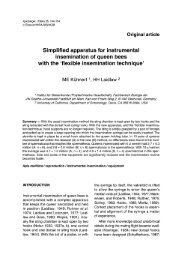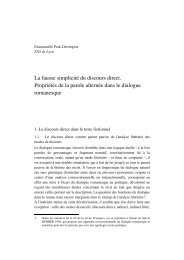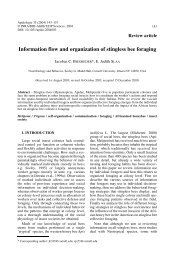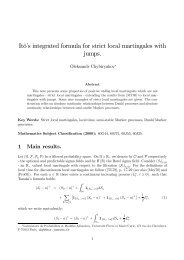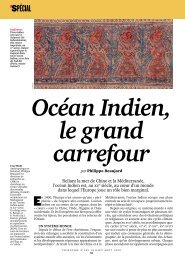ARBEITSGEMEINSCHAFT DER INSTITUTE FÜR ... - HAL - INRIA
ARBEITSGEMEINSCHAFT DER INSTITUTE FÜR ... - HAL - INRIA
ARBEITSGEMEINSCHAFT DER INSTITUTE FÜR ... - HAL - INRIA
Create successful ePaper yourself
Turn your PDF publications into a flip-book with our unique Google optimized e-Paper software.
SUMMARY<br />
Experiments on trophallaxis in winter bees<br />
The distribution of social food in controlled groups of the honey bee Apis<br />
rnellifera carnica was examined in winter using food dyed with green food colouring.<br />
The experiments were carried out by keeping the origin of the bees, the size<br />
of experimental groups, the number of donor bees and the amount of food applied<br />
to donor bees under standardized conditions. The percentage of distribution of<br />
food was measured at 2 different temperatures, 10&dquo; and 30 °C, after 1, 3 and<br />
6 hours. No significant difference could be seen in food distribution at 10 °C.<br />
In constrast, the results at 30 &dquo;C differed significantly among 1, 3 and 6 hours.<br />
The distribution at 10 °C seemed to occur more quickly after 1 and 3 hours ; in<br />
contrast, the value after 6 hours at 30 &dquo;C was significantly higher. Swarm formation<br />
and acclimatization of bees at low temperatures as possible reasons for the<br />
distribution profiles are discussed. Furthermore, it could be shown by the removal<br />
of the intestinal tract that, after 6 hours at 10 °C, only 2.6 % of all coloured food<br />
was found in the honey stomach ; in contrast, the percentage was significantly<br />
higher at 30 °C. Therefore, the possibility of passing on food does not seem likely<br />
after 6 hours for bees kept at 10 &dquo;C.<br />
RÉSUMÉ<br />
Expériences sur la trophallaxie des nbeilles d’hiver<br />
La distribution de la nourriture sociale dans des groupes contrôlés d’abeilles<br />
Apis mellifera carnica a été étudiée en hiver à l’aide de nourriture teintée avec<br />
en conditions contrôlées<br />
un colorant alimentaire vert. Les expériences ont porté<br />
sur l’origine des abeilles, la taille des groupes expérimentaux, le nombre d’abeilles<br />
donneuses et la quantité de nourriture appliquée aux donneuses. On a mesuré<br />
le pourcentage de distribution de la nourriture à 2 températures différentes, 10°<br />
et 30 &dquo;C, au bout d’ h, 3 h et 6 h. Aucune différence significative n’a été trouvée<br />
dans la distribution de nourriture à 10 &dquo;C. Par contre, les résultats à 30 &dquo;C sont<br />
significativement différents selon que la mesure a été faite au bout d’1 h, 3 h ou<br />
6 h. On discute de la formation des essaims et de l’acclimatation des abeilles aux<br />
basses températures comme facteurs possibles des profils de distribution. On a pu<br />
montré en outre, par ablation du tube digestif, qu’au bout de 6 h à 10 &dquo;C seuls<br />
2,6 % de la nourriture colorée se trouvait dans le jabot ; le pourcentage était<br />
par contre beaucoup plus élevé à 30 °C. Il ne semble donc pas que des abeilles<br />
maintenues à 10 &dquo;C soient susceptibles de transmettre de la nourriture après 6 h.




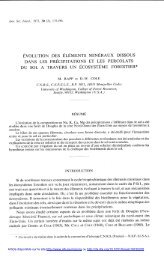
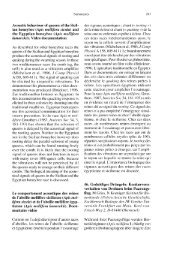
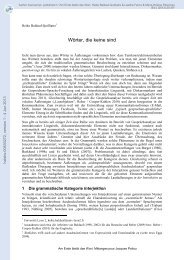
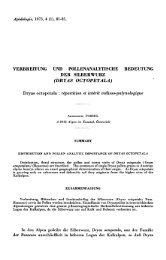
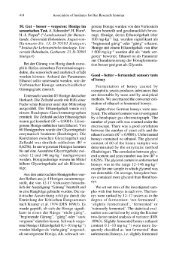
![4 C]-Polyethylenglykol bestimmt, der - HAL - INRIA](https://img.yumpu.com/22454280/1/177x260/4-c-polyethylenglykol-bestimmt-der-hal-inria.jpg?quality=85)
